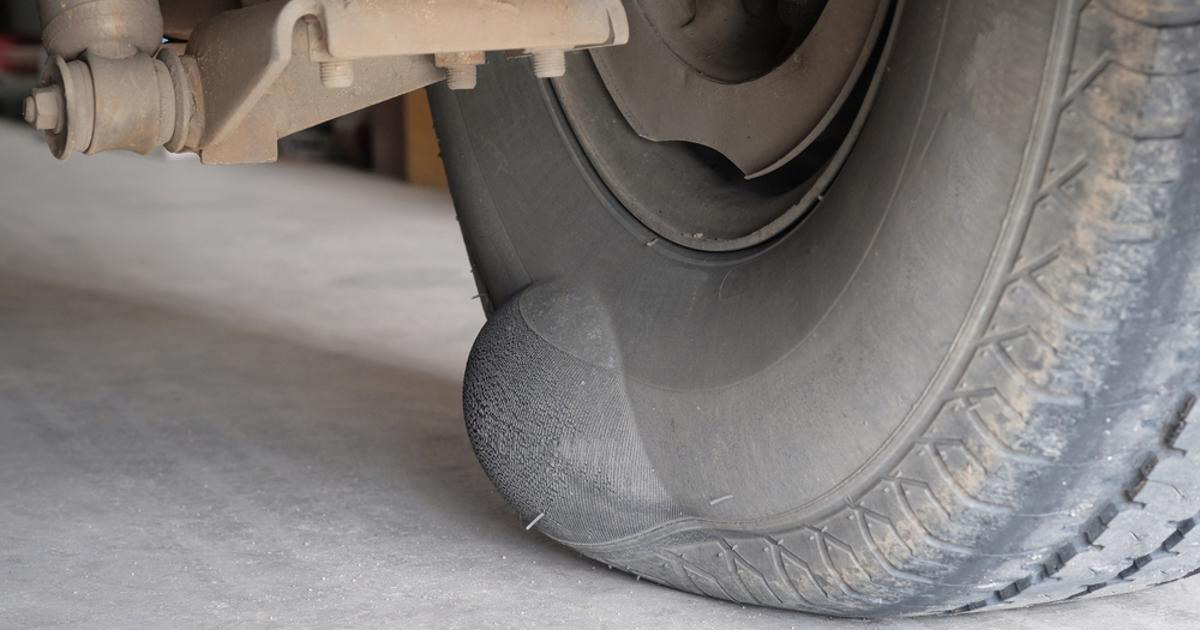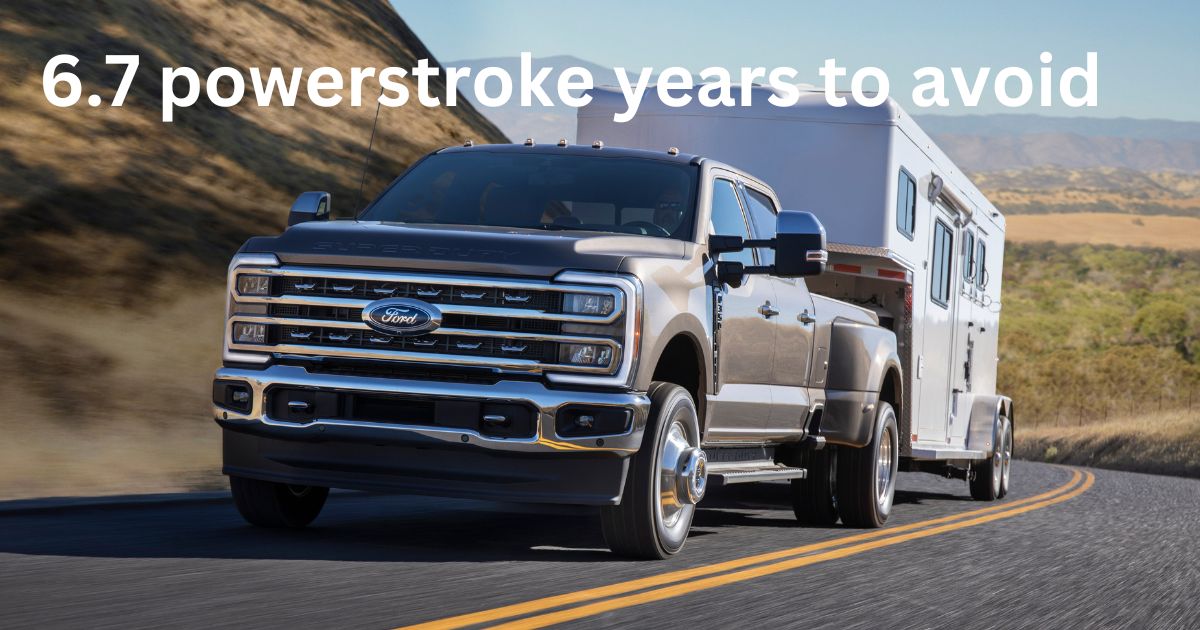
Lowering a truck can make it sleek while improving handling and aerodynamics. However, it can also come with some serious problems that you should be aware of before you decide to lower your truck. One of our recent articles discussed popular lowered truck trends and how to lower your truck.
In this article, we will discuss some of the common problems that lowered trucks face and how you can avoid or minimize them.
1. Bottoming Out
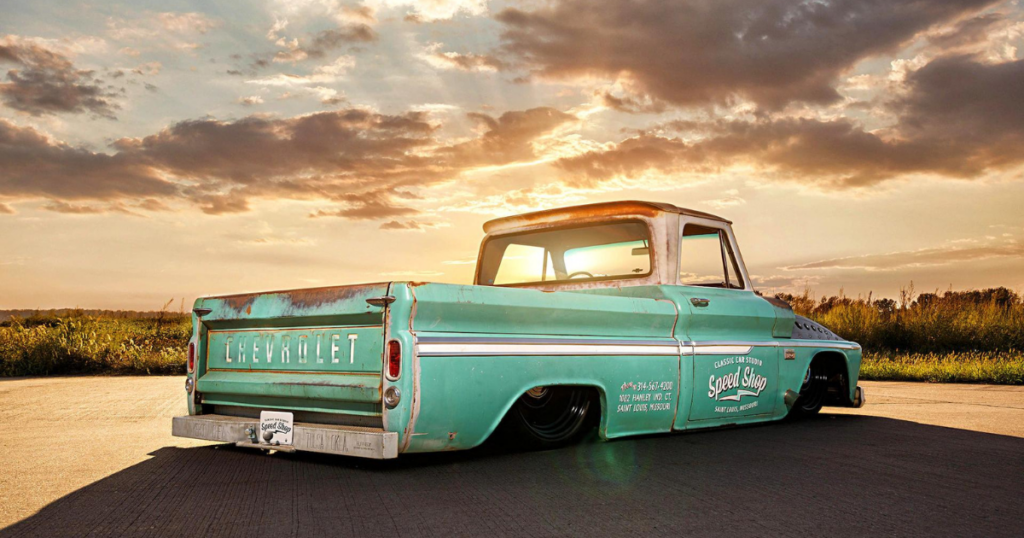
This is the most significant disadvantage of slamming a pickup by preserving the original shocks but cutting stock springs. While a vehicle is lowered to severe levels, the belly is almost certain to bottom out (the undercarriage touches the pavement hard), especially while driving over bumps and uneven roads.
This happens when the underside of the truck hits the ground, causing damage to the chassis, suspension, exhaust, oil pan, and other components. Bottoming out can occur when driving over bumps, potholes, speed bumps, driveways, and uneven roads. It can also affect the performance and safety of the truck, as it reduces the ground clearance and suspension travel.
Prevention
To prevent bottoming out, choose the right lowering kit for your truck. There are different methods of lowering a truck, such as cutting or heating the springs, replacing the springs and shocks, installing drop spindles, lowering blocks, or airbags. Each method has pros and cons, and you need to consider the amount of drop, the quality of the components, the compatibility with your truck, and the cost.
Generally, you should avoid cutting or heating the springs, as this can compromise the integrity and durability of the suspension. You should also avoid lowering your truck too much; this can make it impractical and unsafe to drive. Maintaining at least 2 inches of suspension travel and 3 inches of ground clearance is always a good idea.
2. Reduced Payload and Towing Capacity
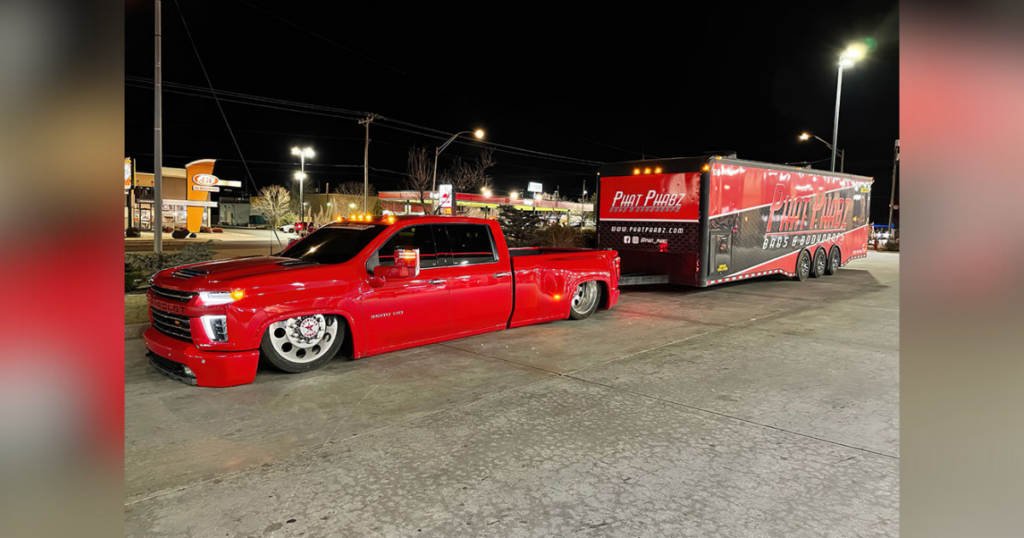
Another problem is the reduced payload and towing capacity. Trucks are designed with a certain suspension height and spring rate to handle the load and balance the truck. However, when you lower a truck, you alter the suspension geometry and reduce the spring rate.
This can cause the following problems:
- The truck may have less rear suspension height, which can make the truck sag or bottom out when loaded or towing. This can damage the truck’s chassis, suspension, exhaust, oil pan, and other components and affect the performance and safety of the truck.
- The truck may have less stability and control when loaded or towing, as the suspension may not be able to absorb the shocks and vibrations from the road. This can make the truck sway, bounce, or fishtail, especially at high speeds or on rough roads.
- The truck may have more tire wear and less traction when loaded or towing, as the suspension may change the alignment and angle of the wheels. This can affect the steering response and braking distance of the truck, as well as increase fuel consumption and emissions.
Prevention
To avoid these problems, you need to consider the purpose and use of your truck before lowering it. If you need to carry heavy loads frequently, you may want to reconsider lowering your truck or choose a mild drop that does not affect the load handling and performance of your truck. To increase the load handling and stability of your lowered truck, you may also need to install some helper springs, airbags, or sway bars.
3. Poor Handling
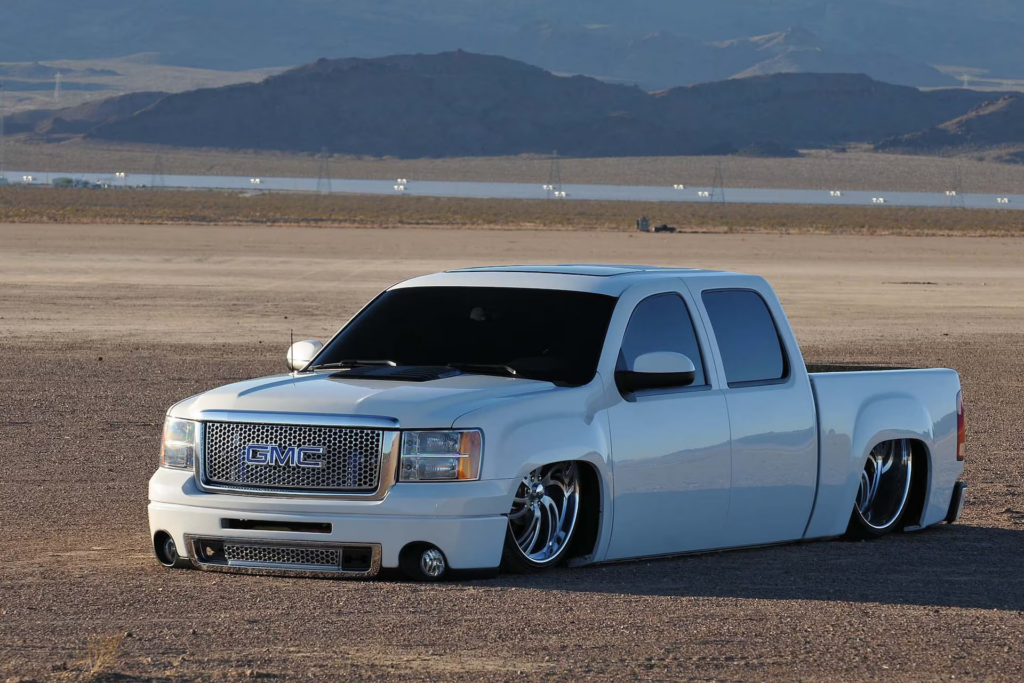
Lowering a truck can also affect its handling and steering. While some lowered trucks may handle better and corner faster, others may handle worse and lose control easier. This depends on the quality and type of the lowering kit, the alignment and adjustment of the suspension, the tire size and pressure, and the driving conditions.
Lowering a truck can change the camber, caster, toe, and steering angle of the wheels, which can affect the tire wear, traction, and steering response. Lowering a truck can also reduce the suspension travel and damping, which can make the ride harsher.
Prevention
To prevent or minimize poor handling, select a high-quality lowering kit that is compatible with your truck and provides a moderate drop; align and adjust the suspension and tires after lowering your truck and check them on a regular basis. Match and maintain the optimal tire size and pressure for your lowered truck and use tire services to extend and improve their performance.
4. Suspension issues
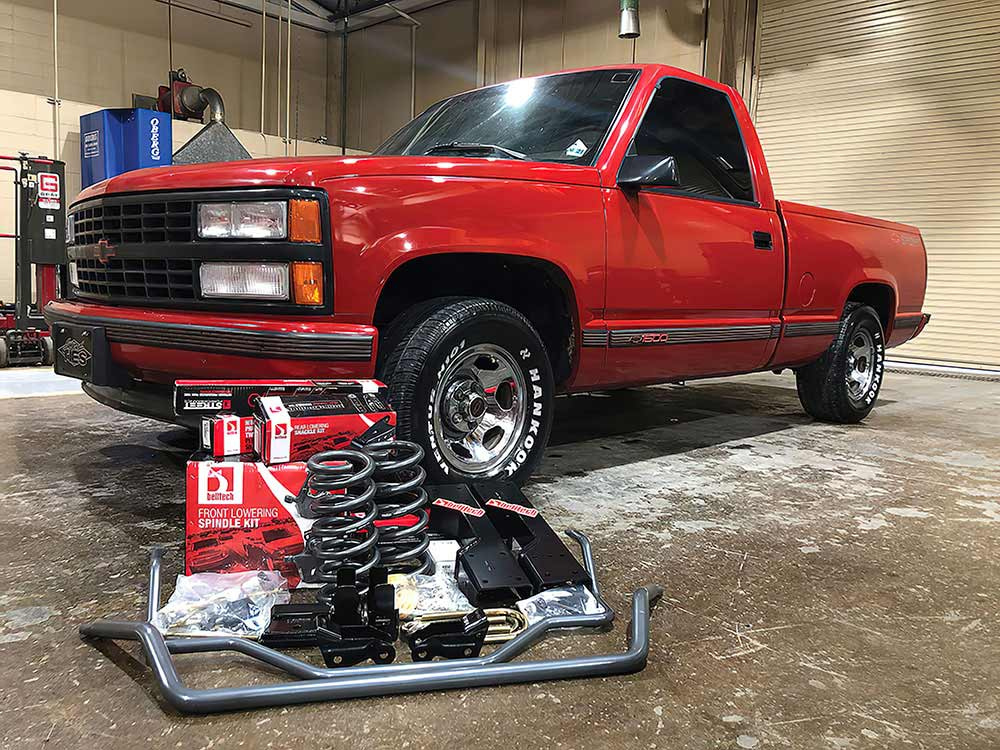
New or replacement lowering parts rubbing against anti-roll bars, wheels, or tires is another potential problem when lowering a truck. When it comes to the tires, suspension binding caused by improper lowering might lead to rapid tire damage.
This can happen when the lowering kit or the replacement parts are too big or too low for the wheel well or when the suspension binding caused by the lowering kit or the replacement parts prevents the wheels and the tires from moving freely.
Prevention
You should check the wheel and tire clearance and condition regularly and adjust or replace them if necessary. You should also use a wheel spacer, a wheel adapter, or a fender roller to increase the clearance and prevent the rubbing between the lowering kit or the replacement parts and the wheels and the tires.
5. Damage to Tires
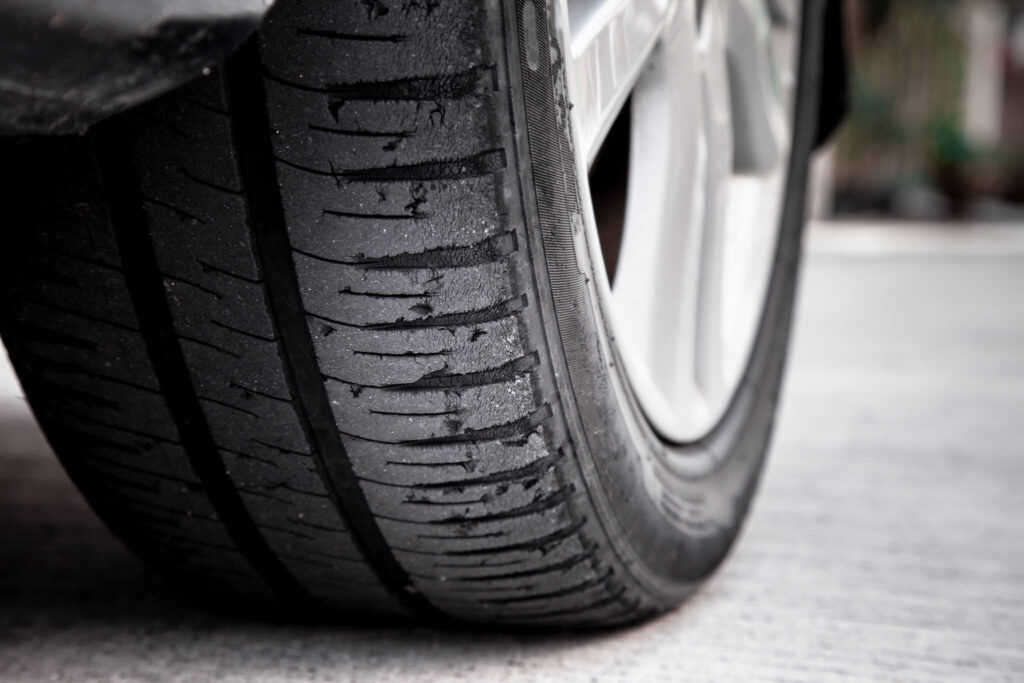
Tire wear and damage increase with automobile lowering. Lower wheels and tires are more likely to contact bumps, potholes, and other road dangers. This can increase punctures, sidewall damage, and uneven tire wear.
The camber angle of the tire varies as an automobile is lowered. A higher camber angle may speed up tire wear, especially on the inside edges.
Prevention
Car owners may fix this by installing adjustable camber plates, which allow for more precise camber changes and can help equal tire wear. Car owners should also properly pump their tires to prevent excessive wear and damage. Overinflated tires lower contact patch, affecting handling and stability.
6. Reduced Ride Quality

Lowering an automobile usually includes modifying the suspension, which might stiffen it. Changing a car’s suspension generally sacrifices comfort for better handling and looks. Lowering an automobile reduces suspension travel, making it harsher. The vehicle may bounce or jolt over bumps and uneven roads, making people inside uncomfortable.
Prevention
Running a taller sidewall can help absorb roughness, but you may give up some of your drop in the process, so it may be worth it to improve your ride rather than attempt to reduce it with tire selection.
7. Legal Problems

Lowering a vehicle may result in legal complications if it violates the regulations and rules of a specific state or country. Many countries have strict laws governing car modifications, such as suspension and height changes. The alterations are considered a safety danger by authorities since they can affect the car’s handling and stability on the road.
How to prevent it?
In the US, each state regulates lowered vehicles differently. Some states require the vehicle’s undercarriage to be a specified height, while others need the state’s Department of Transportation to approve suspension modifications. Thus, to avoid legal issues, you must research your state’s or country’s lowered automobile rules. Talk to a qualified mechanic or automotive expert to ensure your ride is safe and legal.
8. Warranty Problems

Some manufacturers restrict consumers from lowering their autos. You can do it if they let you, but if they don’t and you still lower your car, you’ll have to deal with warranty concerns. This eliminates your ability to hold the manufacturer responsible for any problems that may arise with the vehicle. To prevent any unforeseen problems, remember to consult the manual or the manufacturer before making any decision!
9. Price Issues
Lowering an automobile requires the addition of extra parts and components, which may raise your costs. The lower your vehicle’s alignment, the more it will cost to maintain appropriate alignment. Always be conscious of how much you are willing to spend before making a decision that will cost you in the long run.
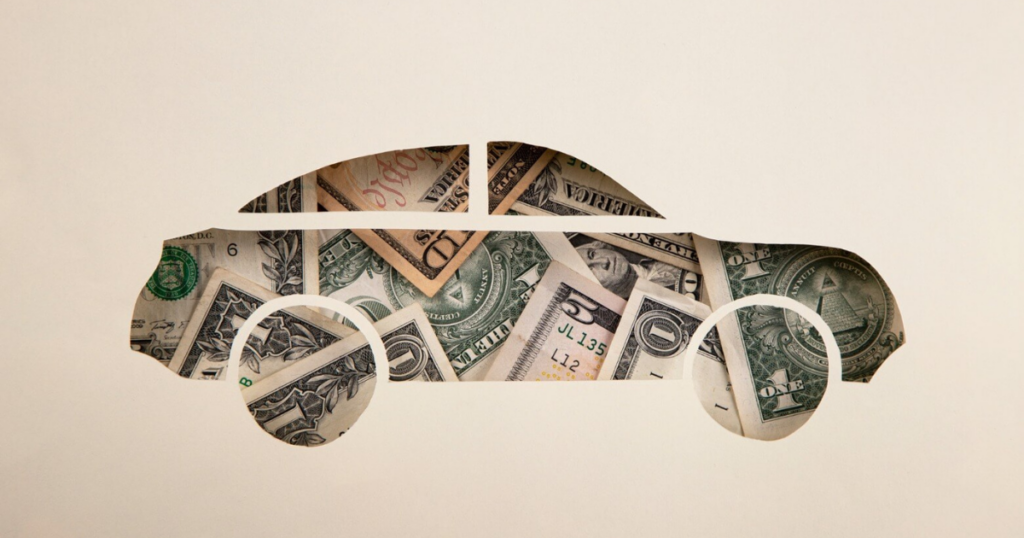
FAQs
Can a truck that is lowered still tow?
Naturally, of course! Like any truck, though, it needs to be configured properly! If you chopped your front springs and removed a lot of leaves from your rear spring packs, you won’t be able to haul very far. On the other hand, you’ll be in heaven if you have a full-on air-ride setup with appropriately rated airbags or a high-quality lowering package (with helper bags depending on the truck).
I want to lower my truck; can I just cut my springs?
Yes, you can, but we don’t like to repeat ourselves, and you’ll probably become weary of the rough ride that comes with choosing the easy route. If your intended drop is simply one or two inches, you should be good to go; however, springs designed specifically for lowered trucks typically work better, offering higher spring rates that help maximize your truck’s lower center of gravity.
Shackles or hangers: which should I use?
Once more, this is one of those cases where we advise utilizing both in tandem to really hammer the dirt out of your vehicle. However, if you’re not into large lowering jobs, each one works just as well if you’re only going down a few inches. Drop shackles are by far the most popular option since they are less expensive and much easier to install. To install drop hangers, you must first unscrew the big factory rivets from your stock hangers and then bolt on the replacement hangers.
Conclusion
Lowering a truck can have benefits and drawbacks, depending on the modification’s method, degree, and purpose. While it can enhance the truck’s appearance, handling, and aerodynamics, it can also cause problems such as bottoming out, reduced payload and towing capacity, and poor handling. Therefore, truck owners should carefully weigh the pros and cons of lowering their trucks.

